Answered step by step
Verified Expert Solution
Question
1 Approved Answer
Muscular dystrophy is a genetic disease caused by a mutation on the X chromosome. During reproduction this mutation arises spontaneously on each of the
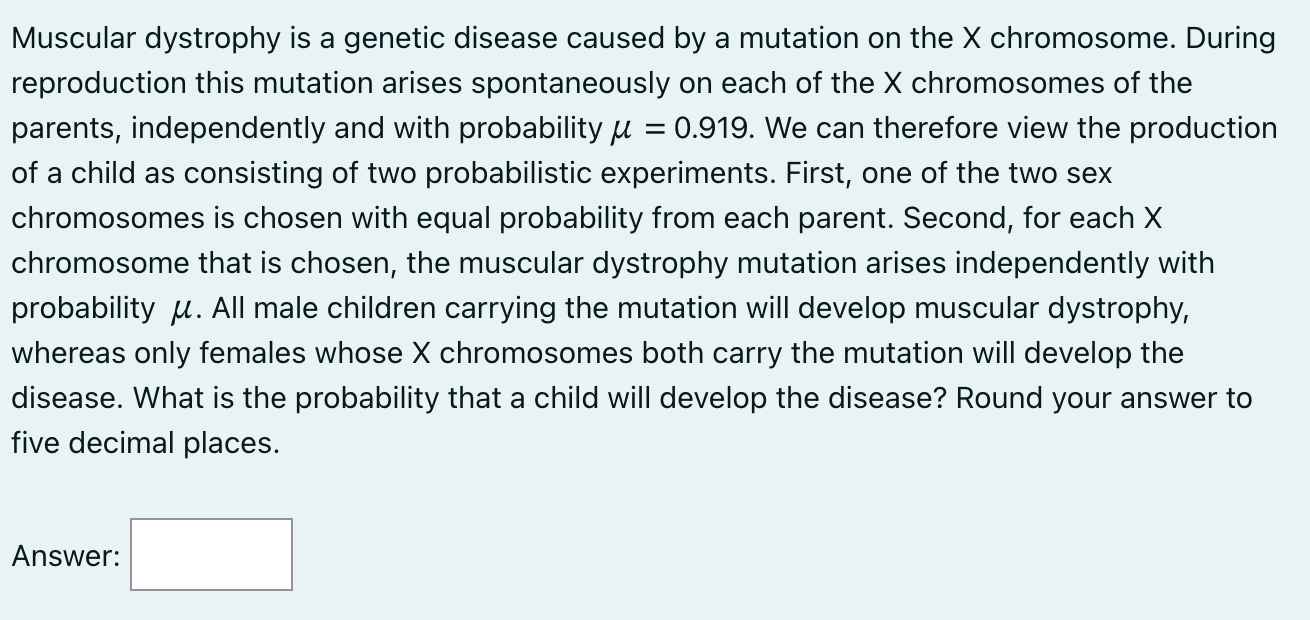
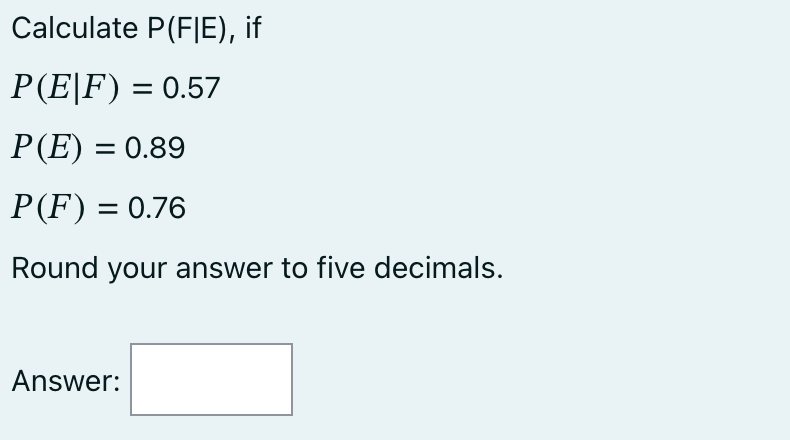

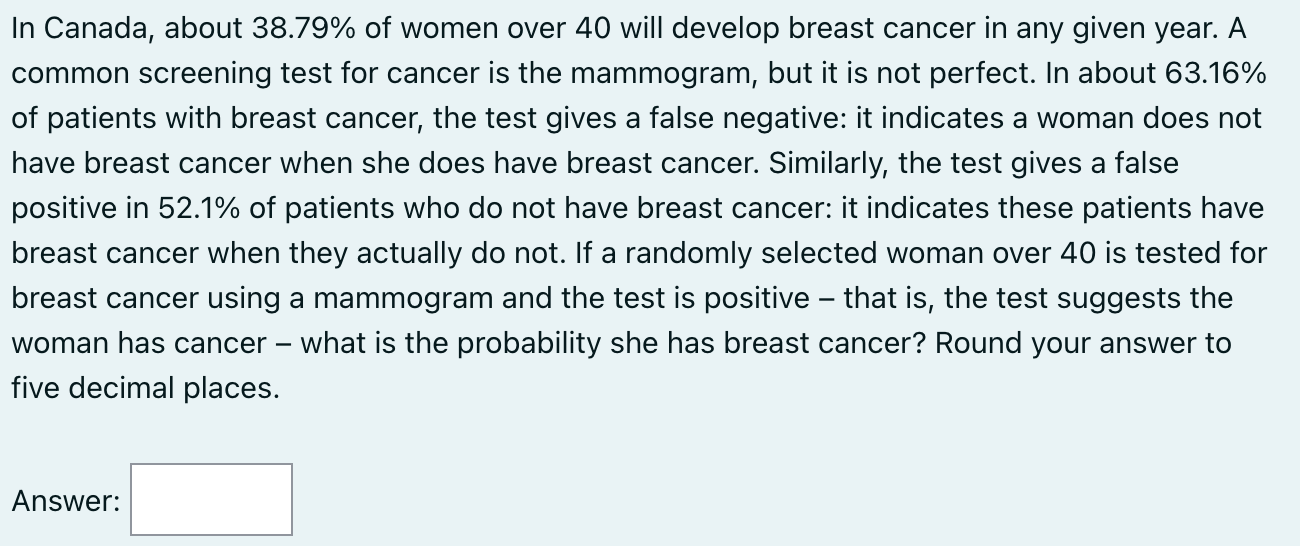
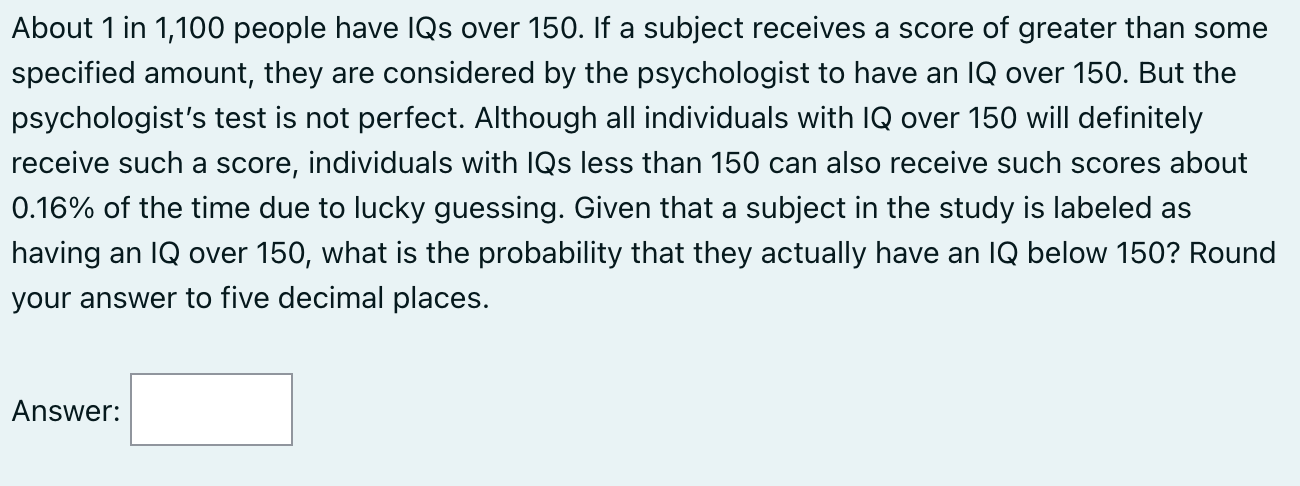
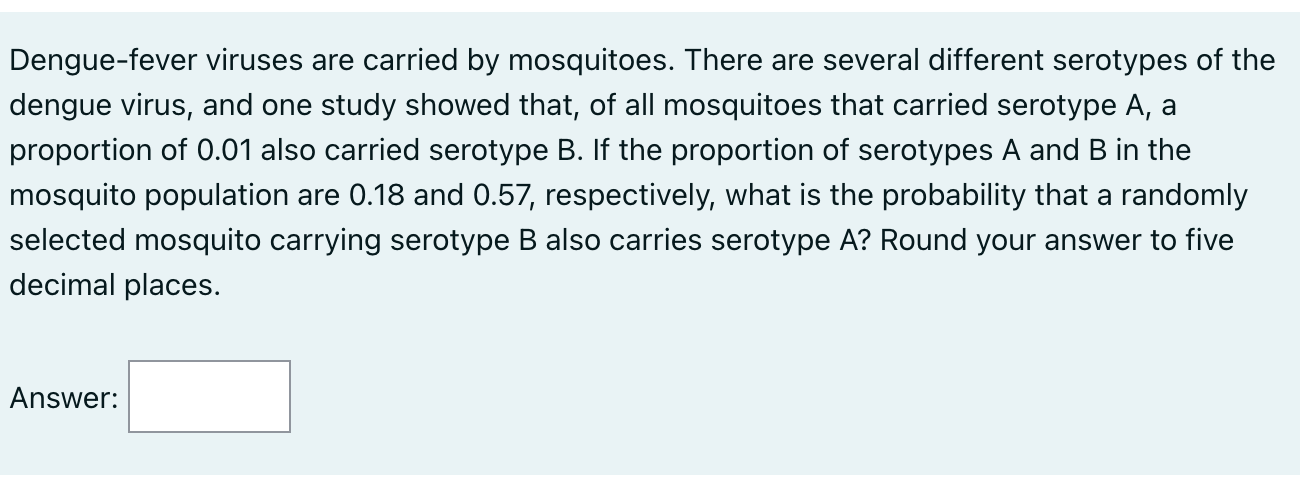
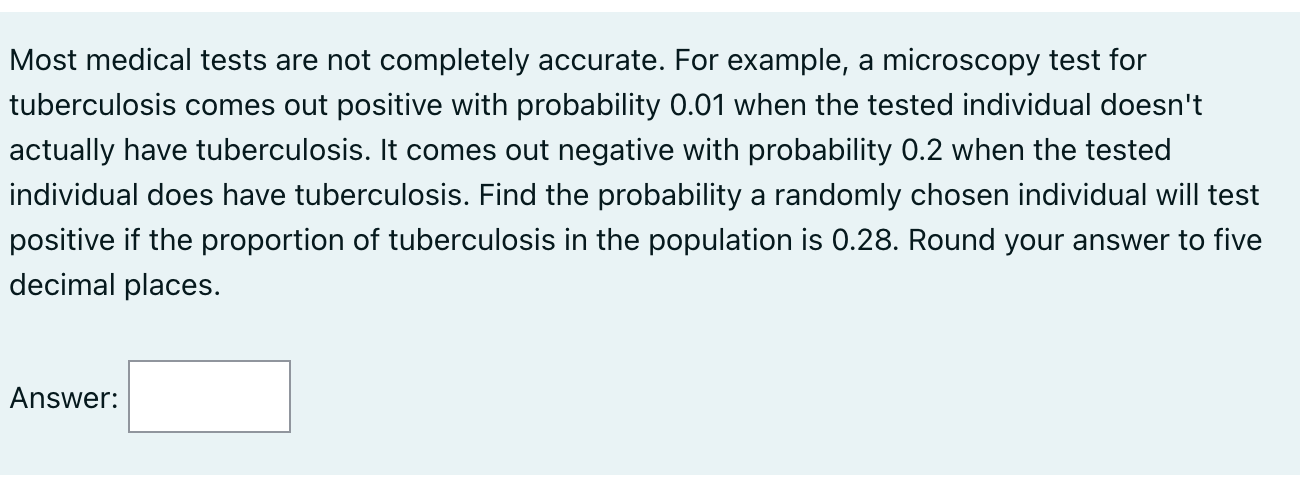
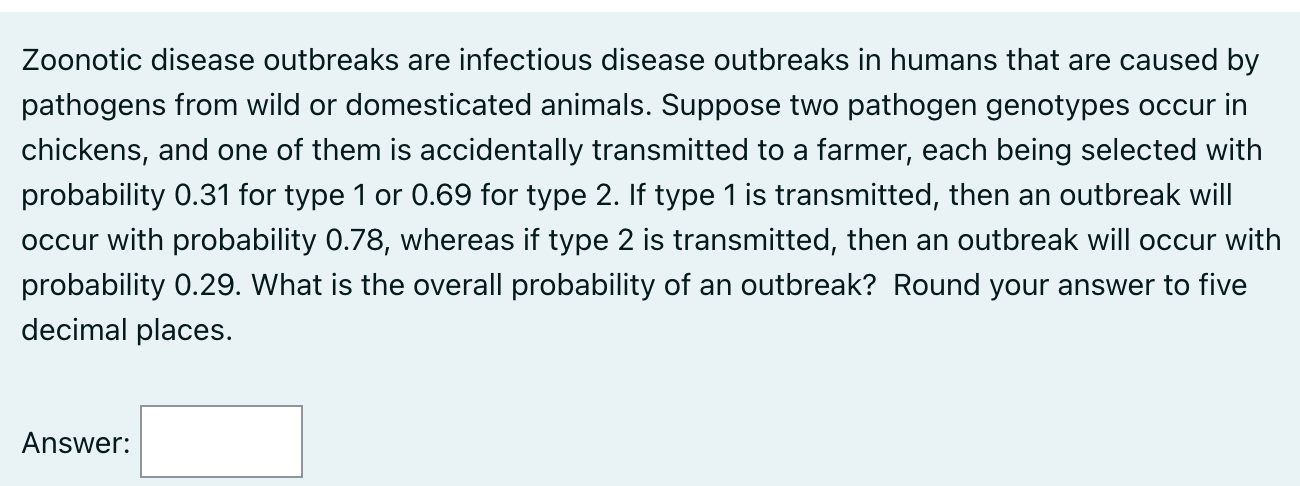

Muscular dystrophy is a genetic disease caused by a mutation on the X chromosome. During reproduction this mutation arises spontaneously on each of the X chromosomes of the parents, independently and with probability = 0.919. We can therefore view the production of a child as consisting of two probabilistic experiments. First, one of the two sex chromosomes is chosen with equal probability from each parent. Second, for each X chromosome that is chosen, the muscular dystrophy mutation arises independently with probability . All male children carrying the mutation will develop muscular dystrophy, whereas only females whose X chromosomes both carry the mutation will develop the disease. What is the probability that a child will develop the disease? Round your answer to five decimal places. Answer: Calculate P(FIE), if P(E|F) = 0.57 P(E) = 0.89 P(F) = 0.76 Round your answer to five decimals. Answer: A blood test for diabetes gives a positive result with a proportion of 0.33 when an individual has diabetes and a negative result with a proportion of 0.9 when they do not. Approximately a proportion of 0.54 of the population has diabetes. If a randomly chosen citizen tested negative, what is the probability that they actually have diabetes? Round your answer to five decimals. Answer: In Canada, about 38.79% of women over 40 will develop breast cancer in any given year. A common screening test for cancer is the mammogram, but it is not perfect. In about 63.16% of patients with breast cancer, the test gives a false negative: it indicates a woman does not have breast cancer when she does have breast cancer. Similarly, the test gives a false positive in 52.1% of patients who do not have breast cancer: it indicates these patients have breast cancer when they actually do not. If a randomly selected woman over 40 is tested for breast cancer using a mammogram and the test is positive - that is, the test suggests the woman has cancer - what is the probability she has breast cancer? Round your answer to five decimal places. Answer: About 1 in 1,100 people have IQs over 150. If a subject receives a score of greater than some specified amount, they are considered by the psychologist to have an IQ over 150. But the psychologist's test is not perfect. Although all individuals with IQ over 150 will definitely receive such a score, individuals with IQs less than 150 can also receive such scores about 0.16% of the time due to lucky guessing. Given that a subject in the study is labeled as having an IQ over 150, what is the probability that they actually have an IQ below 150? Round your answer to five decimal places. Answer: Dengue-fever viruses are carried by mosquitoes. There are several different serotypes of the dengue virus, and one study showed that, of all mosquitoes that carried serotype A, a proportion of 0.01 also carried serotype B. If the proportion of serotypes A and B in the mosquito population are 0.18 and 0.57, respectively, what is the probability that a randomly selected mosquito carrying serotype B also carries serotype A? Round your answer to five decimal places. Answer: Most medical tests are not completely accurate. For example, a microscopy test for tuberculosis comes out positive with probability 0.01 when the tested individual doesn't actually have tuberculosis. It comes out negative with probability 0.2 when the tested individual does have tuberculosis. Find the probability a randomly chosen individual will test positive if the proportion of tuberculosis in the population is 0.28. Round your answer to five decimal places. Answer: Zoonotic disease outbreaks are infectious disease outbreaks in humans that are caused by pathogens from wild or domesticated animals. Suppose two pathogen genotypes occur in chickens, and one of them is accidentally transmitted to a farmer, each being selected with probability 0.31 for type 1 or 0.69 for type 2. If type 1 is transmitted, then an outbreak will occur with probability 0.78, whereas if type 2 is transmitted, then an outbreak will occur with probability 0.29. What is the overall probability of an outbreak? Round your answer to five decimal places. Answer: A probability density function for the random variable X is given by pi = ki, where k is a constant. What value must k be if X takes on integer values between 0 and 36? Round your answer to five decimal places. Answer:
Step by Step Solution
There are 3 Steps involved in it
Step: 1

Get Instant Access to Expert-Tailored Solutions
See step-by-step solutions with expert insights and AI powered tools for academic success
Step: 2

Step: 3

Ace Your Homework with AI
Get the answers you need in no time with our AI-driven, step-by-step assistance
Get Started


